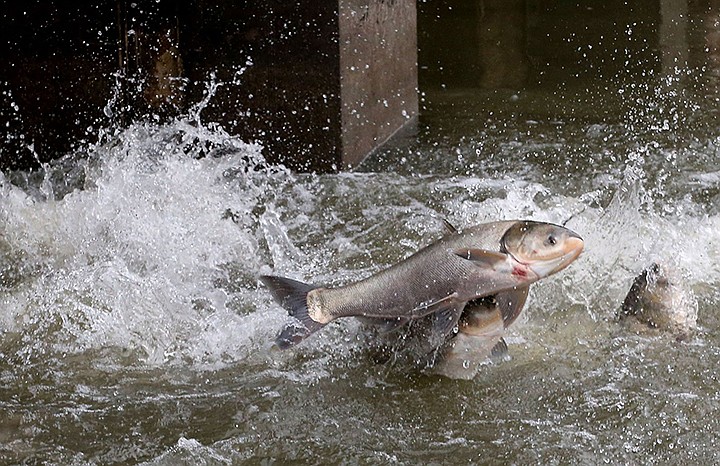CHICAGO - There may come a day on the Illinois River when a fish swims up a chute, slides through a scanner, and, after being recognized as a feared silver carp, is sorted and removed, eventually ending up in a carp burger on your dinner plate.
Keeping invasive carp out of the Great Lakes has involved a series of less-than-silver bullets - from commercial fishing to carbon dioxide experiments to the forthcoming Brandon Road barriers near Joliet from the U.S. Army Corps of Engineers.
Now, fish recognition is entering the fray.
Illinois researchers are preparing for another test run of a system that could get Asian carp out of waterways while also helping native fish travel. The technology comes from Whooshh Innovations, a company "disrupting the world of fish passage" - and popularly known for the viral fish tube, or salmon cannon. The experiment is taking place at the Nature Conservancy's Emiquon, a more than 6,000-acre wetland restored along the Illinois River that is teeming with wildlife, biodiversity and, like many places these days, Asian carp.
Those working on the project - the Nature Conservancy, Illinois Department of Natural Resources, Illinois Natural History Survey and Whooshh - are hopeful it can become another tool to deal with the carp problem, which threatens the health of food chains and the fishing industry.
In a reversal, researchers are hoping for the opposite of what they've wanted since Asian carp made their way into the Mississippi River decades ago - that the invasive carp will come.
Worth the expense?
On a soggy day in Lewistown, Illinois, a group of hefty silver carp leaped up near a water control structure, which connects the Emiquon wetlands to the river.
Doug Blodgett, the Nature Conservancy's director of river conservation, looked out above what looked like a ladder in the water, tubing and a large silver box with the Whooshh branding.
The chutelike structure, called a steeppass, was installed last year at Emiquon. Researchers wanted to see if fish would enter the contraption, which sends down water from the wetlands - offering a higher-quality food supply - to lure the carp from the river. Now the next part of the system - a "FishL Recognition" scanner - is being tested.
Ideally, Whooshh says the system would attach to a floating structure, making it resilient against fluctuating water levels. In an effort to cut costs, the Emiquon version is more fixed, meaning it's beholden to high water, and researchers are saving expensive testing days for when the system can operate fully.
In a short trial last year, nearly 80 fish from seven species ended up in the holding pool.
In the few days the project has been up and running this season, nearly 2,000 fish have passed through - almost all native gizzard shad - with nearly 1,000 in one day at the end of April.
Three relatively small grass carp are included in this year's count but no silver carp or bighead carp - the most alarming species because of how much plankton they can eat and how much space they can take up, leaving little for native fish.
"We want to know - can we get numbers of carp moving up this thing to make it worth the expense?" Blodgett said.
If you're a fish entering the Whooshh system, you swim, slide, glide and dive, said Vince Bryan, the Seattle company's CEO.
The fish swim up the about 30-foot chute, slide through a scanner that uses six cameras to take 18 shots for aquatic facial recognition and then glide through a misted tube until they dive into water.
From the time a fish leaves the water to the time it's inside the tube can be as fast as a second, Bryan said. Inside the tube, travel is about 25 feet per second.
The idea to move fish grew from a system used to gently transport apples. One day, Bryan tried out the trip on tilapia. The fish passage technology has been employed out West for dwindling populations of salmon to help them cross dams and migrate upstream to reproduce.
Bryan, who was born in Chicago, was familiar with the invasive sea lamprey, an eel-like creature that latches onto fish and drains their blood. The parasitic fish devastated Great Lakes trout populations. So Bryan could imagine the potential damage Asian carp could cause.
"It was not a difficult leap to think about, OK, what is the problem here, and what kind of chaos is this going to cause?" Bryan said.

